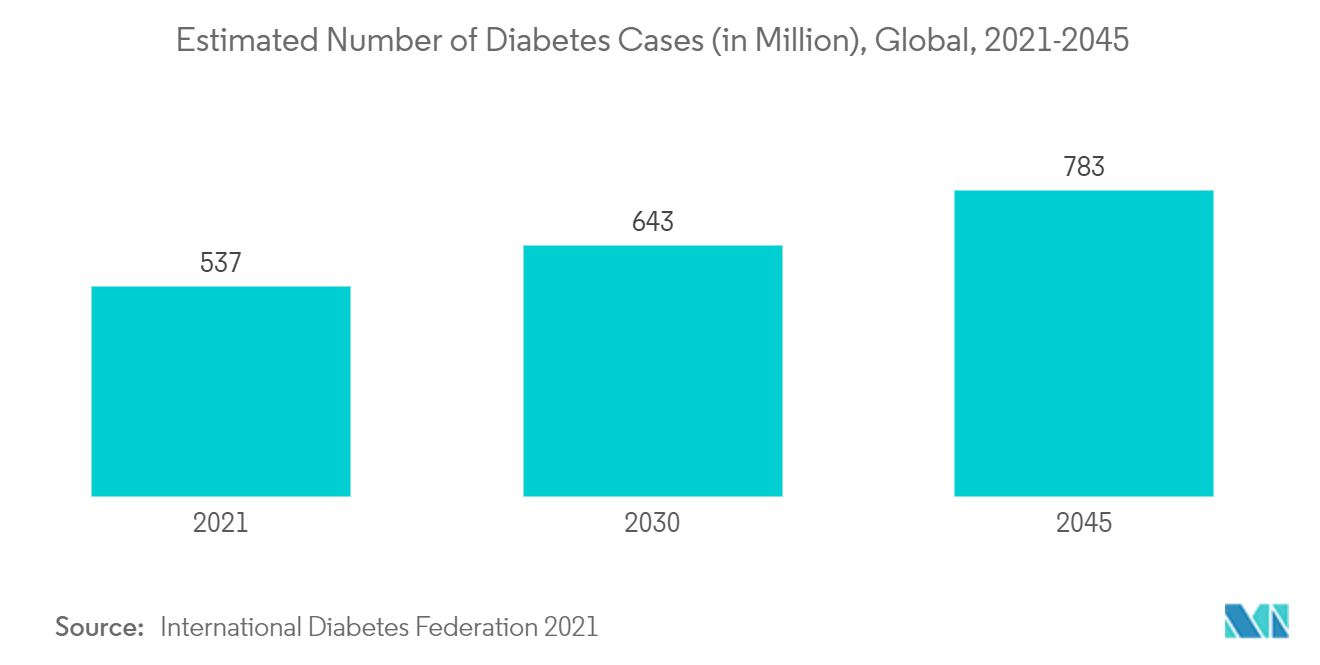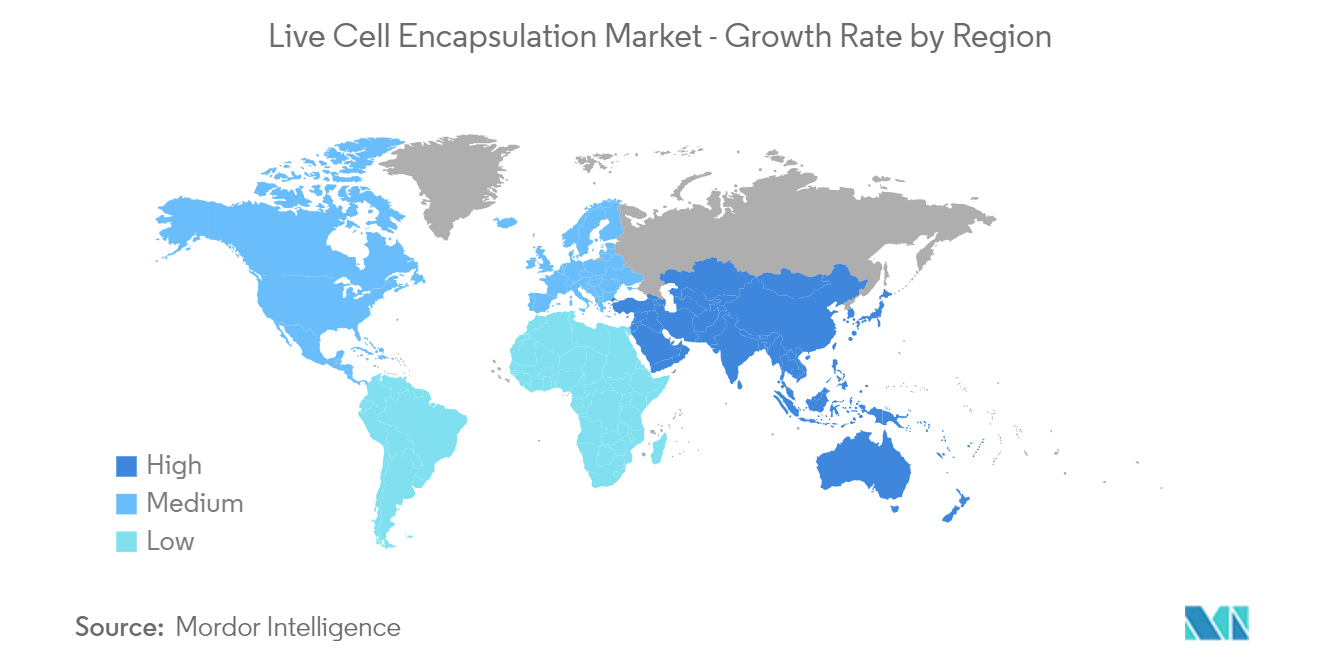Market Trends of Global Live Cell Encapsulation Industry
Drug Delivery Segment is Expected to be the Major Contributor to the Live Cell Encapsulation market
Live cell encapsulation produces tablets, capsules, and parenteral dosage forms and is widely used in drug delivery systems. The increasing use of cell encapsulation for drug delivery drives this segment's growth, owing to its procedural advantages, such as improved efficacy, reduced toxicity, and improved patient condition.
The advantages of live cell encapsulated drug delivery include high efficacy, tolerability, and patient compliance. For instance, according to the Elsevier study article published in October 2021, live cell encapsulation improves drug solubility and permeability, bioavailability, reduces side effects, and improves therapeutic efficiency while providing preferential accumulation of active molecules at specific tissue sites or cells. Thus, the advantages of live-cell encapsulation in drug delivery are expected to drive the demand for live-cell encapsulation, thereby anticipated to boost segment growth.
Additionally, various market players involved in developing encapsulated drug deliveries and market player strategies are also expected to contribute to the market's growth. For instance, in May 2022, Pancryos signed a licensing deal with Brigham and Women's Hospital to develop microencapsulation for treating type 1 diabetes. Similarly, in February 2021, ViaCyte Inc. announced initiating a phase 2 study of encapsulated cell therapy for type 1 diabetes patients. The study will advance a leading encapsulated cell therapy candidate to replace the insulin-producing cells lost in type 1 diabetes.
Thus, all factors above, such as the efficacy of live cell encapsulation in drug delivery product developments by various market players and the rising prevalence of chronic diseases such as diabetes, are anticipated to boost segment growth over the forecast period.

North America is Expected to Hold a Significant Share in the Live Cell Encapsulation Market Over the Forecast Period
North America is expected to dominate the overall live-cell encapsulation market throughout the forecast period. The market growth is due to factors such as the presence of key players, increasing per capita healthcare expenditure, increasing funding and investment for research and development programs in the United States and Canada, and established healthcare infrastructure are the key factors accountable for its large share in the market.
According to a report published in September 2021 by the Pharmaceutical Research and Manufacturers of America (PhRMA), Untill 2021, biopharmaceutical companies invested more than a trillion dollars in research and development, PhRMA member companies invested about USD 91 billion in research and development Additionally, the in December 2021, Government of Alberta announced USD 5.6 million funding to strengthen Alberta's life sciences and pharmaceutical sector in Canada. Thus, increasing research and development spending along with high investments is expected to create a huge opportunity for the market players in order to develop advanced therapies involving live cell encapsulation procedures, thereby contributing to the growth of the market.
Furthermore, rising product developments by various market players in the region are expected to boost market growth. For instance, in November 2021, PharmaCyte Biotech, Inc., a biotechnology company focused on developing cellular therapies for cancer and diabetes using its signature live-cell encapsulation technology, Cell-in-a-Box, recently confirmed that the empty capsule material used in its CypCapsTM pancreatic cancer product does not irritate the skin and can be brought into the market. Thus, such product developments are expected to contribute to the growth of the market over the forecast period.
Thus, all aforementioned factors, such as increasing investments in research and development and rising funding from the government along with the presence of key market players, are anticipated to boost the market over the forecast period.


